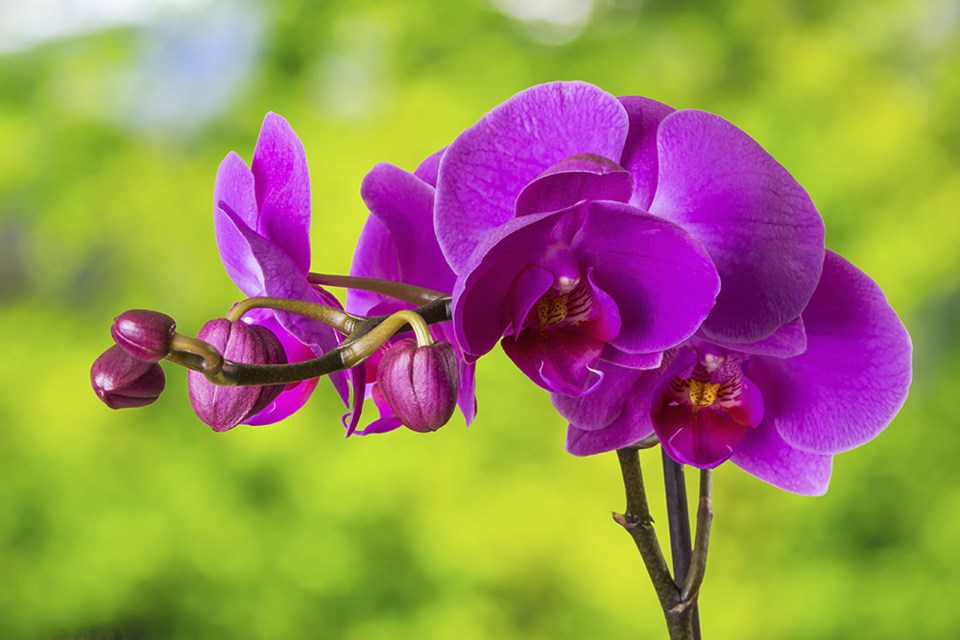Question: I’ve sent you a picture of my phalaenopsis orchid, which I’ve had since 2013. There are still new shoots growing with flower buds, but part of the roots is coming over the edge of the pot and drying out. It looks as if it needs to be replanted. The soil is mostly moss. How soon should I move it into another container?
David Chia,
Burnaby
Answer: Phalaenopsis orchids normally grow new roots outside the pot. This is because in the wild they grow on trees and are used to very humid air around their roots.
But in arid house temperatures, these exposed roots do tend to dry out and eventually need shelter in a pot. Meanwhile, those roots would love to be misted at least once a day.
Every second year is the best timing for repotting. By then the old roots down in the pot are decayed and the moss/bark mix they’re in is probably decayed also.
But, you can’t know whether your orchid was newly repotted when you bought it. If it was, then it may not be due for repotting just yet.
It might be helpful to lift your orchid out of the pot and check whether there are decayed roots down there. Also check whether the potting mix is in good shape or brown and in a state of soil-like disintegration. Spring is the best time for repotting, after your phalaenopsis has bloomed.
So if the photo of your phalaenopsis is recent and it is blooming now – and depending what you find when you check the deeper roots, it might be best to transplant now as flowers fade.
If the potting mix doesn’t look ready, you could wait until after the next bloom cycle. Garden centres sell special orchid mixes for phalaenopsis.
Question: I planted seed potatoes in a vegetable garden along with other vegetables and the potatoes are thriving, but now their leafy heads are blocking sun over the bed. Could I cut back some of the foliage off the top of the plants to allow more light to the other vegetables, such as cucumbers?
Gill Edwards,
Vancouver
Answer: It all depends which crops you value more. Removing leaves from any plant weakens it. The more leaves you take, the fewer potatoes you’ll get and they could be smaller, too.
But maybe you like eating cucumbers better than you like potatoes. Also potatoes are usually less expensive than cucumbers.
If your cucumbers are vining ones, they may be able to escape into the sunshine away from the potatoes. So if the cucumbers are showing signs of developing vines, why not cut just enough leaves to encourage the young cucumber plants, then begin guiding the vines out into the light.
Cucumbers and squash can be guided by moving their young vines in desirable directions and thrusting short sticks into the soil either side of them to make sure they stay guided away from other crops.
Question: If I can’t dig bluebells up, can I just cut the leaves to the ground right now and keep doing so each year in the hopes that the plant/bulbs will stop growing?
Helen,
Vancouver
Answer: Yes, if you cut the foliage to the ground immediately and frequently, all bulbs will lose vigor. But it might take a long time to eliminate bluebells.
Anne Marrison is happy to answer garden questions. Send them to her via amarrison@shaw.ca.



